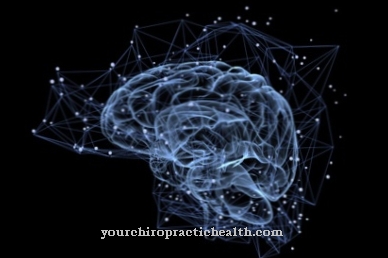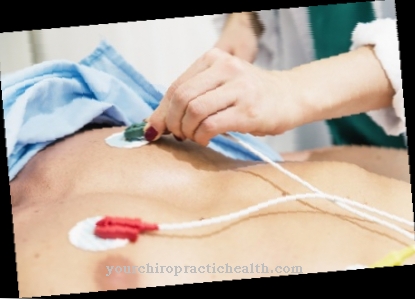The Reflexology is an alternative treatment method. She is also under the term Reflexology Therapy known. It is based on the idea that the pressure on certain areas of the skin affects more distant areas of the body.
What is a reflexology massage?

The variant of reflex zone massage practiced today goes back to the doctor William Fitzgerald. After studying the healing powers of Far Eastern procedures and methods of the Native Americans, he divided the human body into ten zones.
His theory assumes that these zones are reflected in the feet. The reflex zones of the foot are in connection with organs or other areas of the body. By applying pressure to the appropriate areas, ailments can be treated or discovered. The masseuse Eunice Ingham expanded this massage technique and made it popular in the USA under the name Reflexology. From there the process came to Europe. There are now different variants of reflexology.
What they all have in common is the idea that different reflex zones on the skin are in connection with areas of the body. This view has parallels to the Ayurvedic massage traditions from India and to acupressure. Acupressure has a different basis with the idea of meridians running through the body. There are also similarities to Head’s zones. These are areas of the skin that react to certain diseases with sometimes painful changes. Compared to the reflex zones, the Head's zones are medically occupied.
Function, effect & goals
The reflex zones are found in different parts of the skin. There are massages for the foot, hand, head, ear and stomach. Other variants of the reflex zone therapy are the connective tissue massage and the periosteal massage.
In addition, there are modifications of the reflex zone massages that combine different healing methods such as color or gemstone therapies. The best known is the foot reflexology massage. It can be found in the therapeutic and wellness areas. As a naturopathic treatment, massage is used to uncover functional disorders in the body or to release blockages through pressure and possible reactions. Users assume that pressure pain in certain areas of the foot indicates problems with the associated organs. The feet represent the right and left halves of the body and some reflex zones are only found on one foot.
Medically, the mode of action is not clear. There are many nerve receptors on the feet that, among other things, report the position of the body to the brain. Other scientists suspect that a remote effect via the fascia is possible. They are part of the connective tissue and penetrate the entire body. It is undisputed that the foot reflex zone massage contributes to general well-being and promotes blood circulation. It can have a calming and pain relieving effect. For alternative practitioners and alternative medicine practitioners, the healthy effect is far greater: the zones can be used to identify ailments, supplement conventional medical procedures and activate self-healing powers. It is suitable for the treatment of pain, circulatory disorders, immune system weaknesses, cardiovascular problems, digestive disorders and exhaustion.
Hand reflexology has the same effect. The difference is that the reflex zones are deeper in the tissue than on the feet and the pressure exerted is stronger. The advantage is that the hands can be reached at any time and are therefore particularly suitable for self-treatment. Massage sticks and warmth support the application of the ear reflex zone massage. A combination with Far Eastern methods is the reflex zone facial massage, which is also intended to tighten the face. The head reflex zone massage is also a hybrid of Far Eastern healing art and reflex zone therapy. It involves acupuncture.
The connective tissue massage focuses on the reflex zones in the trunk. The aim of the massage is to relieve tension in the muscles and connective tissue. The periosteal massage is said to help against headaches, osteoarthritis, back problems and shoulder problems. In contrast to the relaxing foot or hand massages, it is painful. A strong pressure on certain points of the periosteum, the periosteum, stimulates the blood circulation and cell regeneration. For many therapists, the colon massage is also a reflex zone massage. It is used for certain problems: with circular massages on the stomach, it supports the bowel function and promotes lymph flow.
Risks, side effects & dangers
The scientific assessment of reflexology is critical. Anatomically, the assumed connections between the reflex zones and areas of the human body cannot be demonstrated. The effectiveness has not yet been scientifically proven. Smaller studies examined the effects of foot reflex zone massages and led to positive results, especially in pain therapy.
However, due to the limited number of participants, these studies did not meet the usual scientific standards. Critics complain that there are many different and inconsistent representations of the reflex zones. Many health insurances do not pay for this therapy method. For certain massages such as the periosteal massage, however, they reimburse partial amounts of the costs. Many scientists judge reflexology to be a relaxing and calming alternative treatment. They attribute the healing effect that sometimes occurs to a placebo effect.
Reflexology is not recommended for open wounds, athlete's foot, varicose veins, high blood pressure, phlebitis, fever, infections and depression.Periosteal massage is not advisable for tumors and osteoporosis. Even pregnant women should only have reflexology massages performed in consultation with a doctor and therapist. Basically, it is important to ensure that a trained therapist performs the massages, because improperly performed treatments can lead to injuries. The side effects of the massages are increased urination, diarrhea or nervousness.












.jpg)

.jpg)
.jpg)











.jpg)